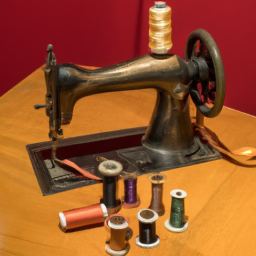
History of Sewing in India

Sewing has been an integral part of Indian culture for centuries. With a rich history spanning diverse regions,
each with its unique traditions, India has contributed significantly to the art of sewing and embroidery.
The earliest evidence of sewing in India can be traced back to the ancient Indus Valley Civilization (3300–1300
BCE). Archaeological excavations have unearthed terracotta figurines adorned with stitched garments, suggesting
the existence of a well-developed sewing culture during that period.
One of the most renowned forms of Indian sewing is traditional embroidery, which has flourished throughout the
country. Different regions in India specialize in their own unique embroidery styles. For example, the
intricate and colorful phulkari embroidery of Punjab, the delicate chikankari work of Lucknow, and the vibrant
kantha stitching of West Bengal are just a few of the many diverse embroidery traditions in India.
The Mughal era (16th to 18th centuries) played a significant role in the development of Indian sewing. With the
arrival of the Mughals in India, Persian and Islamic influences fused with indigenous techniques, resulting in
the birth of new sewing styles and designs. This period witnessed the rise of exquisite zardozi embroidery,
characterized by the use of gold and silver threads along with precious stones and beads.
During the British Raj in the 19th and 20th centuries, sewing in India experienced further evolution. British
influence introduced new textiles, sewing machines, and techniques. The popularity of Indian textiles like
muslin, silk, and cotton grew globally, and the demand for Indian embroidery soared.
In modern India, sewing continues to thrive as a traditional craft passed down through generations. It is not
only practiced by artisans but also embraced by fashion designers who incorporate Indian embroidery techniques
into contemporary clothing.
The legacy of sewing in India is celebrated through various textile museums that showcase the country’s rich
textile heritage. These museums not only preserve historical garments but also educate visitors about the
intricate craftsmanship and wealth of Indian sewing traditions.
In conclusion, sewing in India has a deep-rooted history that has evolved over time, blending indigenous
techniques with external influences. It remains an essential part of Indian culture, showcasing the diversity
and artistry of the nation’s embroidery traditions.




